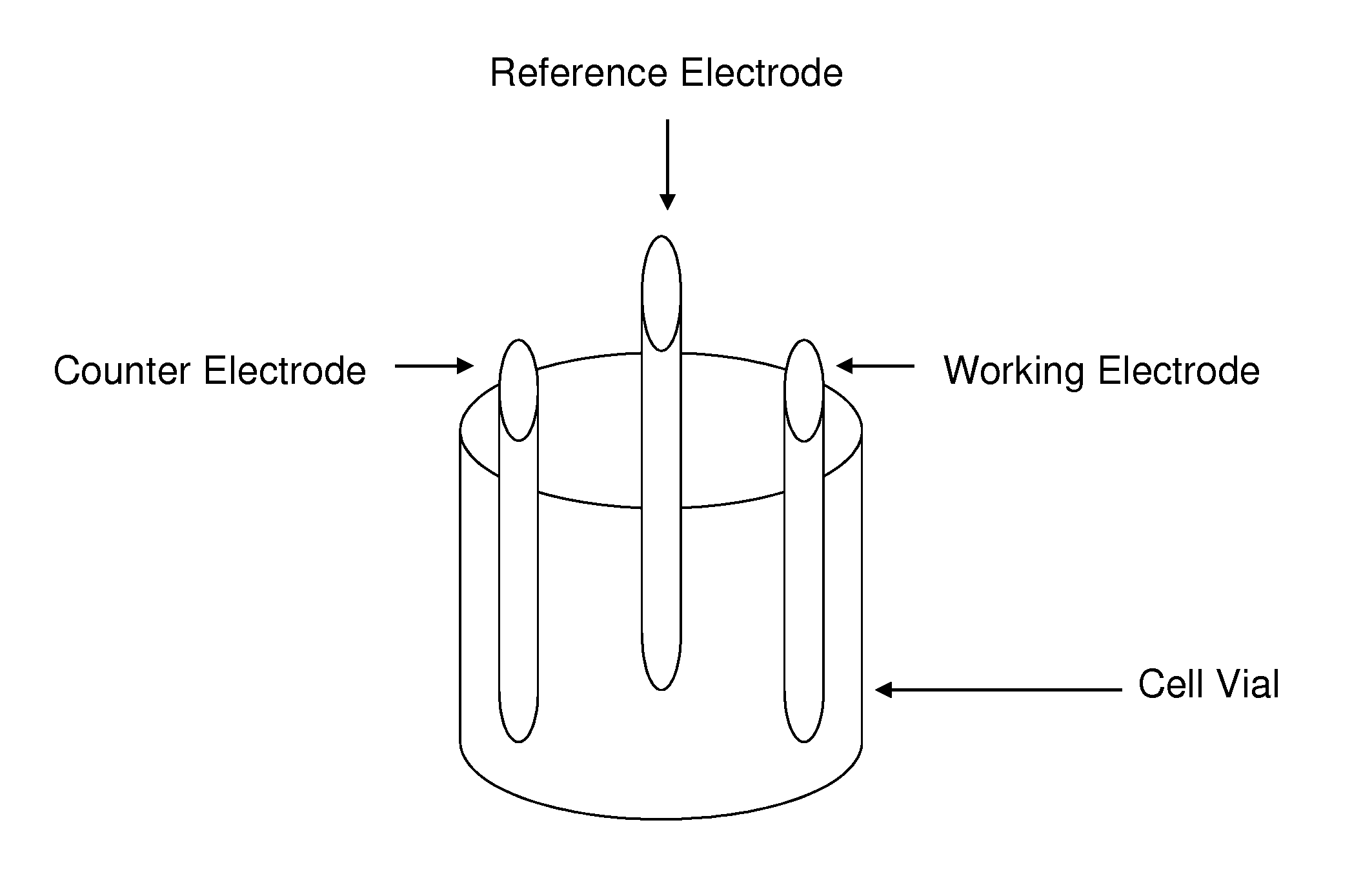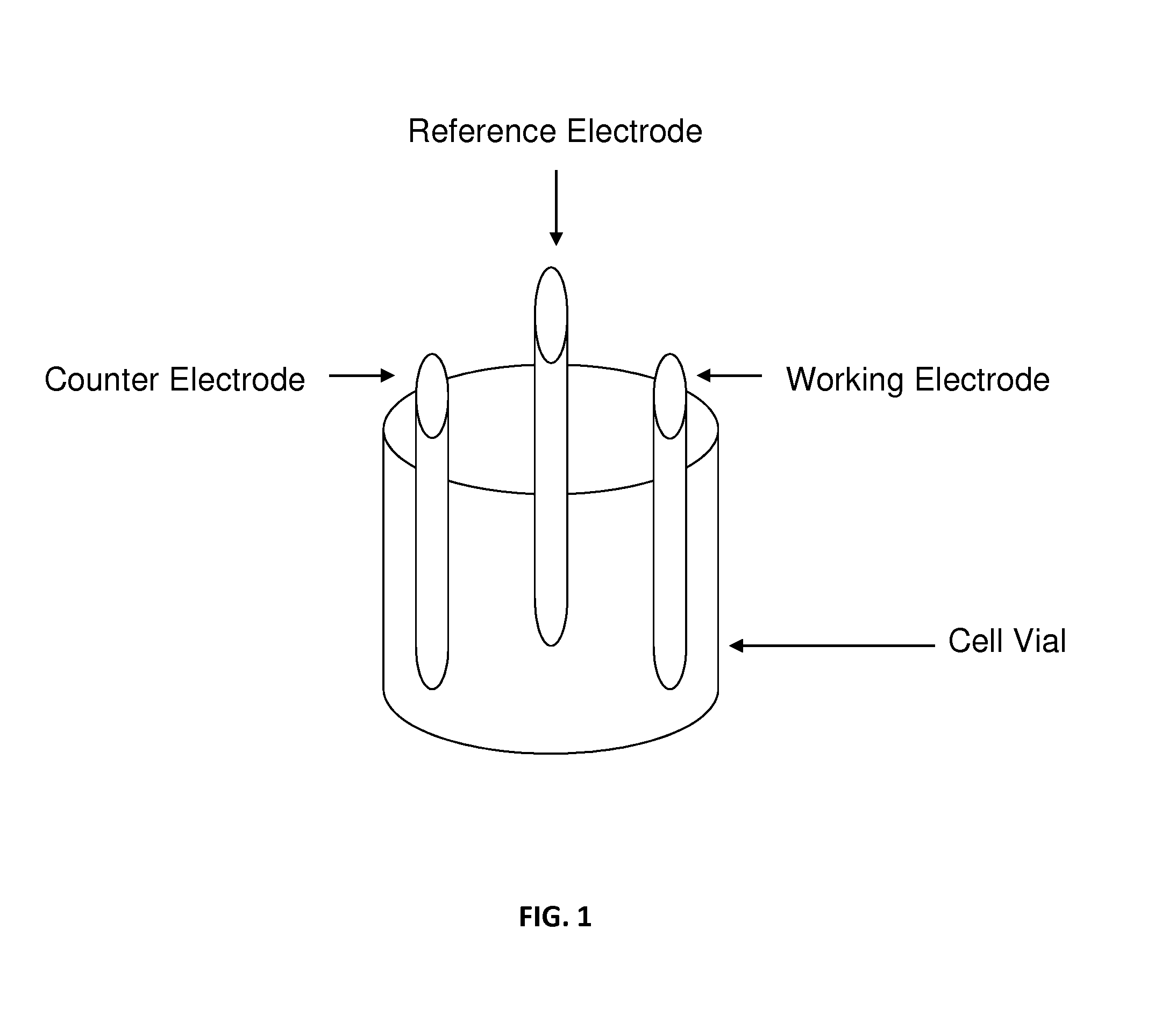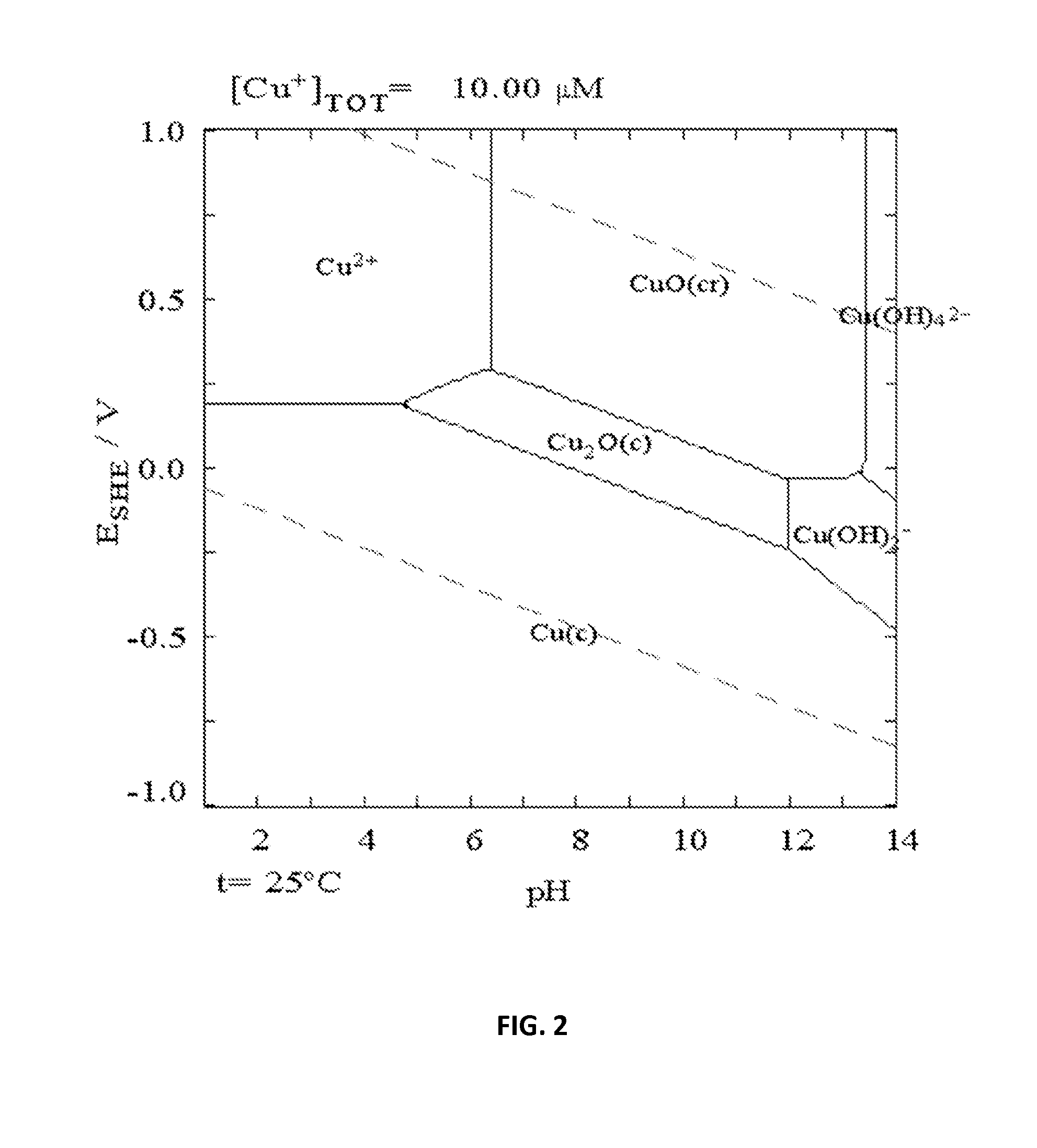Methods of preparing metal containing inorganic ion exchangers
a technology of inorganic ion exchanger and metal salt, applied in the field of methods, can solve the problems of inability to achieve the effects of multiple steps, limited utility, and high cost of metal salt and waste stream treatmen
- Summary
- Abstract
- Description
- Claims
- Application Information
AI Technical Summary
Benefits of technology
Problems solved by technology
Method used
Image
Examples
example 1
Solution Exchange
[0046]300 grams of 60% ammonium nitrate solution was added to 2700 grams of deionized (DI) water. 300 grams of calcined SSZ-13 zeolite having a silicon / aluminum ratio of about 14 was gradually added to the solution with agitation to form a slurry. The slurry was heated to 80° C. and held at this temperature with agitation for one hour. The ammonium exchanged zeolite (SSZ-13-NH4+) thereby formed was filtered and washed until the conductivity of the filtrate was below 200 microohms. The SSZ-13-NH4+ was dried at 90° C. for 16 hours.
[0047]11.97 grams of copper (II) acetate monohydrate containing 3.81 grams of copper was dissolved in 400 ml of deionized water with agitation at 70° C. 100 grams of the SSZ-13-NH4+ described above was added to the solution. The pH of the resulting slurry was 4.6. The slurry was stirred for one hour at 70° C. The resulting copper exchanged SSZ-13 was filtered and washed with 2 liters of deionized water. The copper exchanged SSZ-13 (SSZ-13-Cu...
example 2
Electrochemical Exchange
[0048]FIG. 3 shows six photographs representing the visual cycle of electrochemistry ion exchange process. An electrochemical cell was constructed that consisted of water (50 mL), an electrolyte (2 g of ammonium carbonate), and a magnetic stirrer—all shown in FIG. 3a. The counter electrode is platinum gauze (or any other metal that will not be reduced or oxidized). The working electrode is a foil (Cu) or any other metal desired to be incorporated into the zeolite or molecular sieve. Two grams of zeolite is added (either sodium, ammonium or H+ form)—shown in FIG. 3b. The pH of the zeolite slurry is adjusted to the desired level (between pH 3-9). by addition of acid or base. The temperature of the cell is varied between experiments ranging from room temperature (i.e., about 22° C.) to 85° C. The electrodes are immersed in the slurry of the molecular sieve. The electrolysis is controlled by a BASi 100 w potentiostat. The reaction is run until the desired amounts...
example 3
Taking Copper Out of Solution by Electrochemistry
[0049]A flask was charged with a stir bar, 2.0 grams of Cu(OAc)2.H2O, 2.0 grams of Na(OAc).3H2O and 50 mL of DI H2O. The mixture was stirred until all of the solids dissolved into solution. The solution became a copper blue color. 10 mL of the solution was taken for elemental analysis. A copper electrode, as the counter electrode, and a platinum electrode, as the working electrode were submerged into the solution. Bulk electrolysis was run into the solution became colorless from the blue solution. During this time it could be seen that copper metal was building up on the counter electrode. The electrolysis was run for an additional 30 minutes after that. Elemental analysis showed the starting solution had a copper concentration of 13800 ppm while after electrochemistry the copper concentration was less than 0.1 ppm. This is the detection limit of the analytical ICP-MS unit.
[0050]This experiment shows that copper can be removed from so...
PUM
| Property | Measurement | Unit |
|---|---|---|
| pore size | aaaaa | aaaaa |
| mole ratio | aaaaa | aaaaa |
| conductive | aaaaa | aaaaa |
Abstract
Description
Claims
Application Information
 Login to View More
Login to View More - R&D
- Intellectual Property
- Life Sciences
- Materials
- Tech Scout
- Unparalleled Data Quality
- Higher Quality Content
- 60% Fewer Hallucinations
Browse by: Latest US Patents, China's latest patents, Technical Efficacy Thesaurus, Application Domain, Technology Topic, Popular Technical Reports.
© 2025 PatSnap. All rights reserved.Legal|Privacy policy|Modern Slavery Act Transparency Statement|Sitemap|About US| Contact US: help@patsnap.com



